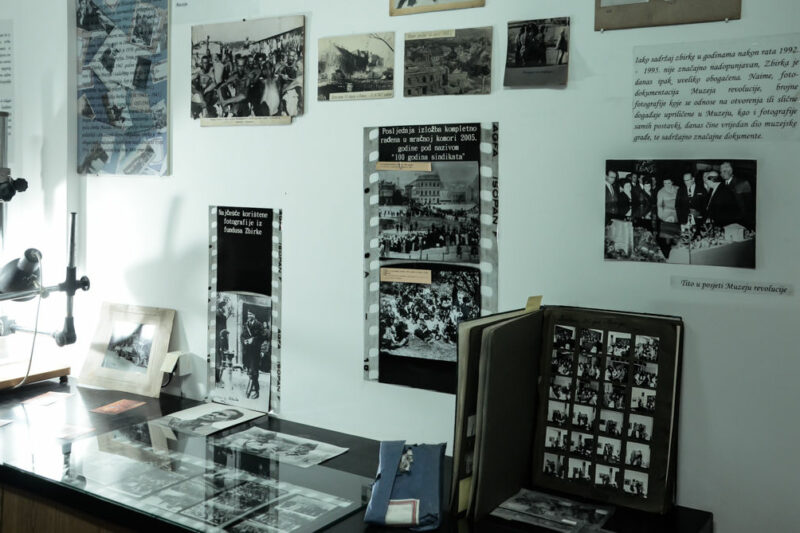About the Collection
Systematic gathering of photographs for the Museum collection as primary museum documents began with the foundation of the Museum in 1947. The collection of photographs has been created through systematic selection: Gifts, purchase, storage, exchange with other institutions and collectors (such as the EU Commission on War Crimes, individuals, associations of veterans of World War II, military organizations and some brigades, participants in the National Struggle for Liberation and their descendants, as well as gifts and exchanges with museum institutions in Zagreb, Belgrade, and Novi Sad. The Museum also conducts fieldwork, collecting and systematically purchasing photographic material from private owners. Photographs in the Museum’s collections record details of the political, economic, and cultural life in Bosnia and Herzegovina’s past. These photos are valuable testimony from BiH history which is unknown or not sufficiently known to the public. Today, the Collection of Photographs of the History Museum of Bosnia and Herzegovina follows the course of history over the twentieth century to the independence of Bosnia and Herzegovina (including the last war, 1992-1995). Overall, the collection includes around 100,000 photographs.
Founded
1950. year
What is the Museum most proud of?
Photographic material held in the History Museum of Bosnia and Herzegovina has the status of original museum objects, and it is also a vital part of BiH’s photographic heritage. The collection includes photographs by eminent artists like Walter Tausch, Georges Skrigin, Jan Beran, Šefket Maglajlić, Aleksa Škrbo, Ferdo Winterfeld, Ron Haviv, and Danilo Krstanović. Postcards from the late 19th century until 1945 are a valuable part of this collection. The postcards depict Bosnian towns, folk costumes, portraits of important figures, and reproductions of works of art. This sub-collection consists of around 3000 postcards.




